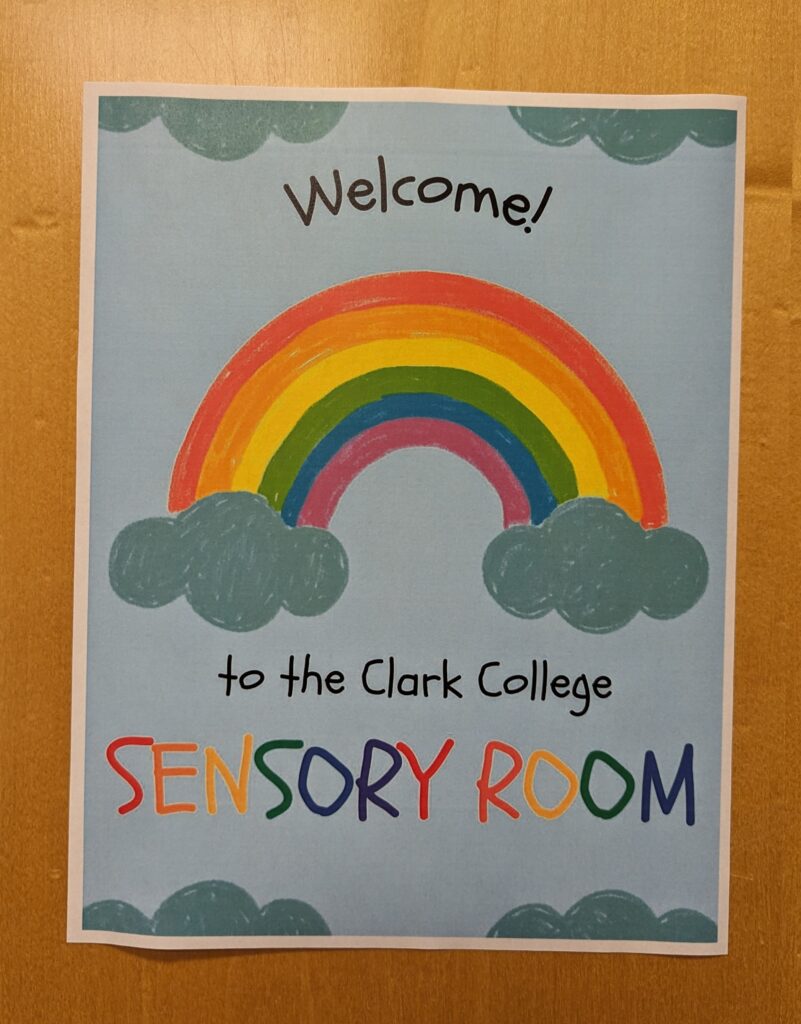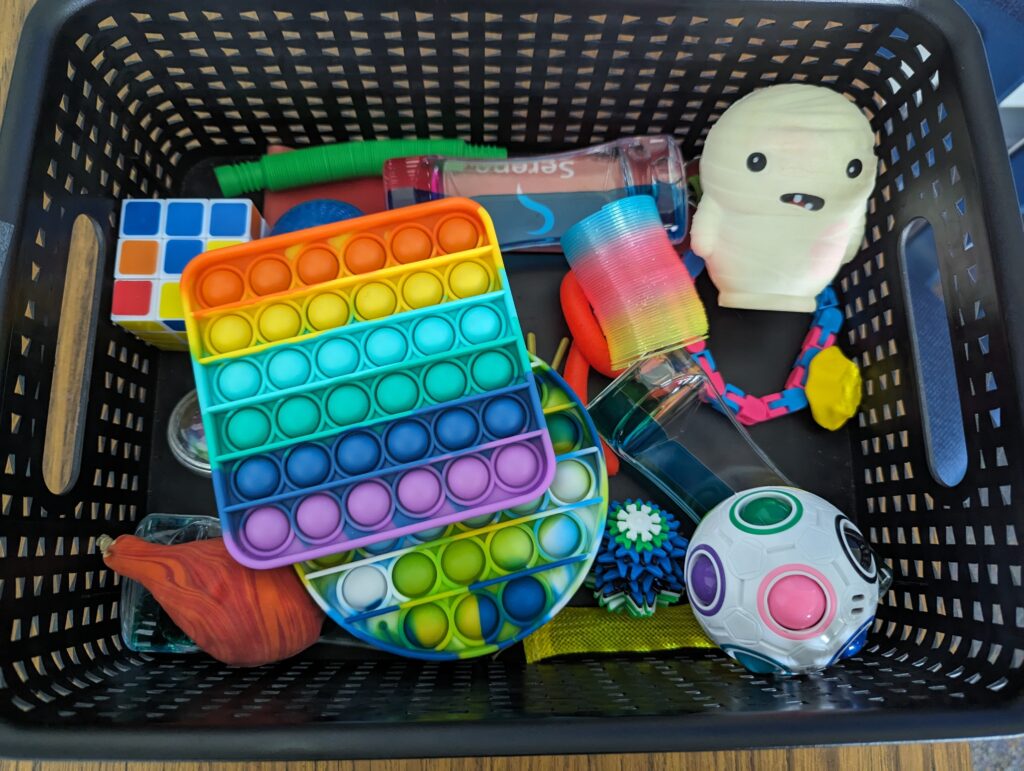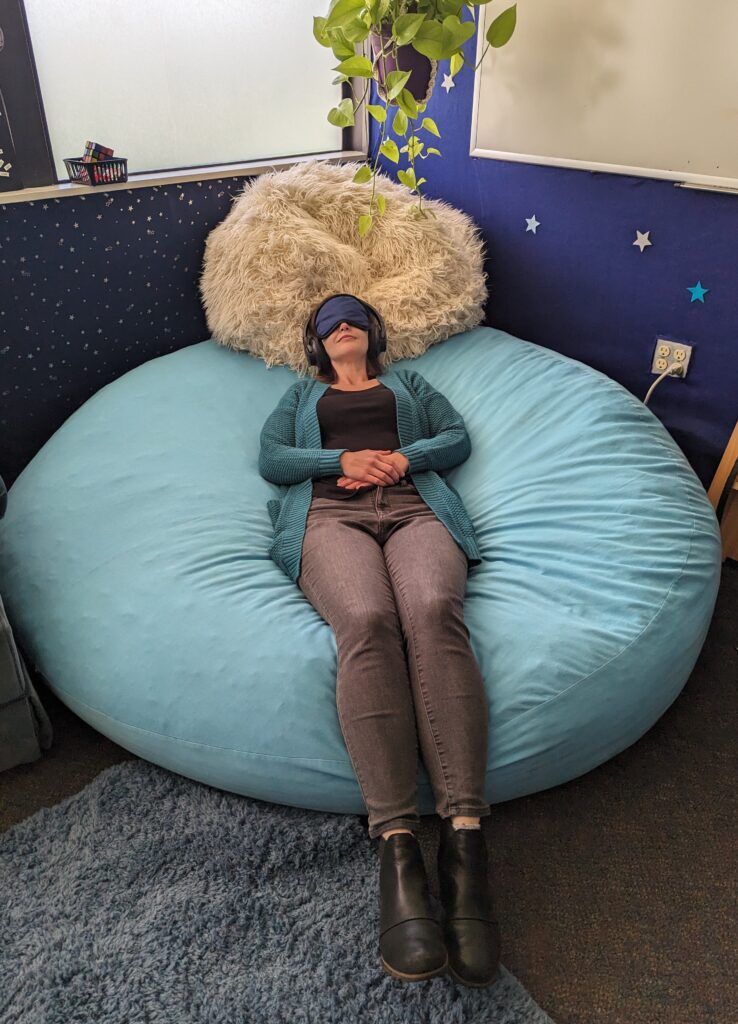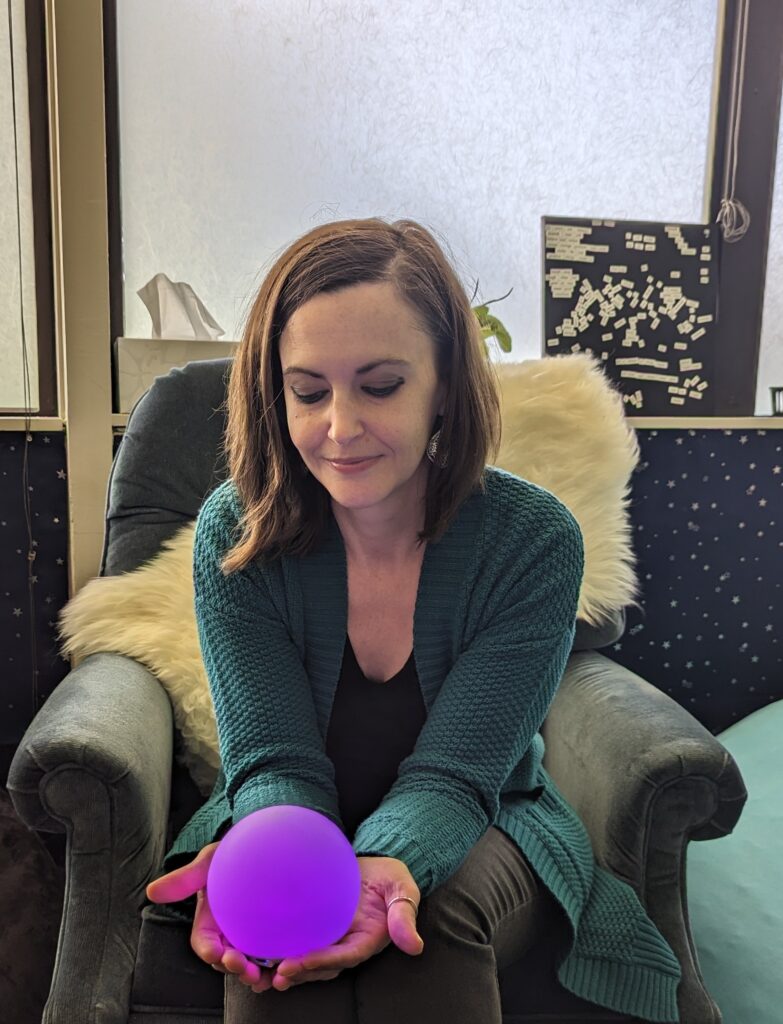Counseling and Health Center

Clark College’s Counseling and Health Center opened a sensory room during fall term. The calming space is geared for neurodivergent students who may feel overstimulated and need to take a short break.
During the center’s open house, the sensory room was a popular place. One student lounged on the beanbag chair. Another relaxed in the massage chair. Two more sat on the comfy couch. Others stood and looked around at the space.
Clark is one of the first community colleges in Washington to open a multi-sensory calming space for students. Although these spaces have historically been created to support people with sensory processing challenges, Clark’s sensory room is open to all students, neurodivergent and neurotypical alike.
Shayna Collins, faculty counselor, said, “Supporting the creation of a sensory room sends a strong message that Clark College is a neurodiversity-friendly campus and seeks to attract and retain neurodivergent students.”

Students access the sensory room by stopping by the Counseling and Health Center inside the Health Sciences Building during business hours and request to use the space. The room is available on a walk-in basis. No appointments are made. Currently only one student may access the sensory room at a time.
“I’m so excited that Clark College is jumping on this important trend to better support the health and well-being of students, particularly those with sensory processing challenges,” said Collins. “I am hopeful that getting the word out about our sensory room could drum up more interest in the college from neurodivergent circles in our community. For example, many students have reported that they chose to attend Clark College because support groups were offered for Autism and ADHD.”
Q: What is a sensory room?
Counseling Center: A sensory room is a dedicated space where people can go to decompress. The room offers a variety of calming tools to help regulate the nervous system. Historically, sensory rooms have been created for individuals with sensory processing challenges like ADHD, autism, anxiety, depression, or PTSD (post-traumatic stress disorder). However, most everyone can benefit from visiting a sensory room, especially if they are experiencing stress and wanting a peaceful place to calm themselves.
Q: What was the impetus for creating a sensory room in Clark’s Counseling and Health Center?
CC: The idea to start a sensory room at Clark College came directly from Clark students. During several meetings of the Autism Support Group (which is offered every term through the Counseling and Health Center), students were discussing ways they thought Clark College could be more welcoming to neurodivergent students. Many of these students had been discussing the recent opening of the sensory room at the PDX Airport and they brought up the idea of having one at Clark College. They brainstormed items they would want to see in a Clark sensory room and shared details of helpful tools they’ve used to decompress.
Q: How did the Counseling Center staff design the sensory room? How did you determine which elements to include in the room?
CC: The design of the sensory room came first from students who attended the Autism Support Group at Clark College. They provided extensive feedback on the types of items and design aspects important to them. We also sought feedback from other students receiving Counseling and Health Center services and did research on best practices for creating sensory rooms from subject matter experts.


Collins pointed out the sensory room’s calming features:
- Art supplies
- Balance board
- Bean bag chairs
- Coloring books
- Exercise ball
- Fidgets (many options)
- Foot massager
- Heating pad
- Hot tea
- Massage chair
- Nature books
- Noise machine (with nature sounds as well as white, pink or brown noise options)
- Noise-canceling headphones
- Reading material
- Rocking chair
- Silly putty
- Snacks
- Sunlight lamp (for Seasonal Affective Disorder)
- Textured throw pillows and rug
- Weighted blanket
Adelphi University in New York opened the nation’s first sensory room at an American college or university in 2018. The college’s sensory room provides a calming refuge for students who are on the autism spectrum or have other sensory needs.
Since then, other colleges and universities have created similar spaces on their campus. Other Washington community colleges that have opened sensory rooms include South Puget Sound Community College in Olympia and Highline College in Des Moines.
Highline College’s reflection room:
Highline College opened a reflection room in the campus library during fall term. Previously, the space was a large vacant office. Highline students can use the room on a walk-in basis. No advance appointments are made. Students can use the space for 30 minutes at a time if there are others waiting. If they are okay with sharing the space with another student, they can flip the sign on the door to say: “Welcome. Please come in.”
“The Reflection Room is a multi-sensory environment where students are welcome to go to retreat, relax, and unwind during the day,” said Jenni Sandler, associate dean for accessibility resources at Highline College. “The room creates a safe space for all students, but particularly those who are neurodivergent. It is our hope that students will use the space to relieve stress and anxiety and leave more focused, relaxed, and confident.”
“Students are practically lining up. Students really benefit and seem to love it. They are also writing positive, identity-affirming notes to each other on the white board. It is really cool to see!” added Sandler. “Many college campuses around the country are creating similar neurodivergent student-centered spaces!”
South Puget Sound Community College’s calm room:
South Puget Sound Community College opened a calm room in their library in fall of 2022, redesigning an existing group study room into a single-person space outfitted with sensory toys, textured surfaces, and active furnishings designed to support individuals with attention deficit disorders focus and self-regulate. Additional space enhancements included the installation of sound-absorbing tiles, a white noise machine, and alternatives to overhead fluorescent lighting. Students using the calm room can also make use of noise-cancelling headphones and an iPad that is pre-loaded with meditation programs selected in partnership with the SPSCC mental health counselors. As with all library study rooms, the calm room can be reserved for up to two hours at a time.
Amy Tureen, dean of academic success programs, noted that the use of the calm room has increased steadily as more and more students return to campus.
“The success of the calm room is helping us consider how we can improve our existing study spaces to meet the of all students,” Tureen said. “We’re currently looking at expanding some of the most popular aspects of the calm room into other study rooms, as well as designing study rooms for other students with unique needs, such as a room dedicated to supporting parents who need to bring their small children with them to the library to study.”
College campuses with sensory rooms:
Articles about sensory rooms in schools: